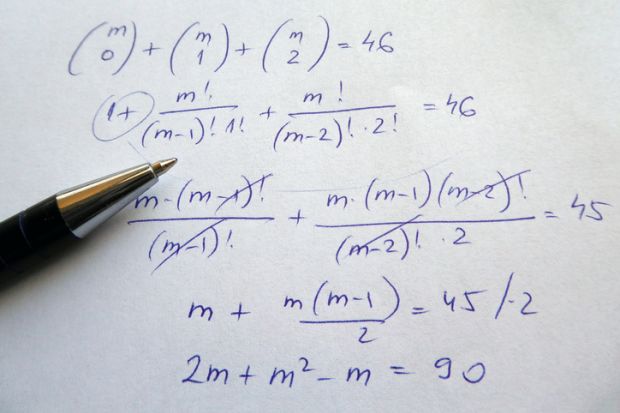For the first time, four of the UK’s major learned societies relating to mathematics are led by women – us. That is worth celebrating on this latest International Women’s Day. But today is also an opportunity to consider the circumstances of women more generally in the mathematical sciences, and to focus on what measures we need to ensure that more follow in our footsteps.
The mathematical sciences ought to be open to all. The wider the range of experiences, outlooks and approaches that we bring into the discipline, the better and more broadly relevant its outputs are likely to be. But the sad fact is that, currently, women account for only about 40 per cent of mathematics A level students and 37 per cent of mathematics undergraduates in the UK. And despite a number of interventions, they account for just 21 per cent of mathematical sciences PhD students – and a mere 12 per cent of professors.
Evidence suggests that there is a feedback effect here: because there are so few female professors, female students can’t see a clear career path through mathematics, so they decide not to pursue a PhD. Conversely, the more girls and women see themselves reflected at the top of the mathematical sciences community, the more they will believe that they belong and can thrive there.
There is a huge need for more research funding support for those in permanent academic positions below professor who are no longer eligible for early career funding. The current dearth hits women particularly hard, as they spend longer at the mid-career stage, often because of its coincidence with the onset of family commitments. This can be fatal to their career prospects.
But it is not just down to external funders. Universities themselves also need to continue removing structural and cultural impediments to career advancement for women. That means challenging bias in recruitment decisions and drawing up new career streams and programmes to plug the leaks in the talent pipeline.
Universities are still not as meritocratic as we would like to think them. Research shows, for instance, that women have to do much more than male colleagues to be viewed as equally meritorious in evaluations. And although diversity in the science workforce is associated with innovation, new ideas proposed by women and minority researchers are less likely to be taken up by the research community.
Women also need more encouragement to apply, or reapply, for research funding. This is because they tend to be less optimistic about the outcome of applications, and so less convinced that it is worth putting in the time to fill out all the paperwork. This, in turn, creates another negative feedback: the lack of progression among women heightens the difficulty of securing research funding, which in turn functions as a barrier to progression. Lower submission rates by women and minorities are often flagged as the actual issue. But the problem lies in the structure of grants and the grant evaluation process.
Mathematics also has a perception problem. Too often, it is still seen to be the realm of the lone genius. And, indeed, it is often that kind of character that produces the substantial research outputs recognised by promotion panels. But, in reality, modern mathematics is largely a team enterprise. And when it is seen as such, it is more likely to attract the kinds of diverse talents needed to be representative, including those of women. We need to change reward and hiring structures that prioritise substantial research outputs over the other activities and talents required for a healthy culture of research and training.
Ironically, well-meaning initiatives to increase the representation of women often involve a lot of work for women themselves. Increasing the visibility of female mathematicians through representation on hiring committees and speaking panels and in outreach work are all positive things; recognition and reward for this extra work should be given. The long-term next step is sharing more equitably the work to increase the visibility of mathematics.
The announcement that the House of Commons Science and Technology Committee is investigating diversity in STEM is welcome. And it’s right to celebrate women in sciences on International Women’s Day. But we also have set out a range of interventions that support diversity by design.
Mathematicians have no excuse. We, of all disciplines, have the expertise to gather and analyse the data. And the numbers clearly show that not enough women are progressing to the top of our discipline. That is what we need to focus on if we want to break the bias that currently works against too many of our sisters.
Ulrike Tillmann is president of the London Mathematical Society. Rachel Norman is president of the Edinburgh Mathematical Society. Sylvia Richardson is president of the Royal Statistical Society. Alison Etheridge is chair of the Council for the Mathematical Sciences.





